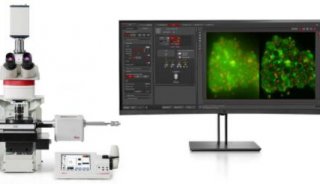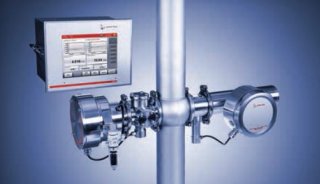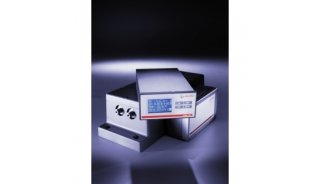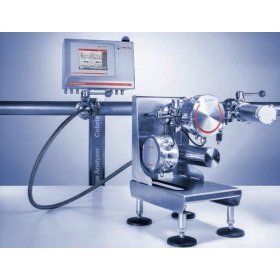Culture of Endometrial Explants to Monitor Synthesis
Reprinted from:
Hansen, P.J and Betts, J.G. (1992) Culture of endometrial explants and peri-implantation conceptuses to monitor synthesis and secretion of proteins and prostaglandins. In: Handbook of Methods for Study of Reproductive Physiology in Domestic Animals, P.J. Dziuk and M. Wheeler, ed., University of Illinois Anim. Sci. Dept., Urbana-Champaign, sect. VII.A.
Culture of Endometrial Explants and Peri-implantation Conceptuses to Monitor Synthesis and Secretion of Proteins and Prostaglandins
P. J. Hansen and J. G. Betts
Dairy Science Dept., University of Florida, Gainesville 32611-0701 and Dept. of Biological Sciences, East Texas State University, Commerce, Texas, 75429
This method was originally developed in the laboratories of R.M. Roberts and F.W. Bazer to allow metabolic labelling of secretory proteins synthesized de novo by cultured porcine endometrium (J. Reprod. Fertil. 60:41-48, 1980). It has since been used to study secretion of proteins and prostaglandins by endometrium from the cow, ewe, mare, bitch and other species. The technique is also useful for culture of peri-implantation conceptuses and placental tissues for metabolic labelling studies and to obtain conceptus secretory proteins for biological studies.
The medium used is called Pig MEM, which is a modified minimum essential medium supplemented with non-essential amino acids, vitamins, insulin and additional glucose. For metabolic labelling studies, specific amino acids are omitted or reduced in concentration to increase incorporation of radiolabel into newly-synthesized protein. Culture is performed on a rocking platform in oxygen-rich conditions to increase gaseous exchange. For conceptuses, however, satisfactory results have been obtained with an atmosphere of 5% CO2 in air and without use of a rocking platform (J. Reprod. Immunol. 18:271-291, 1990).
Preparation of Pig MEM
This recipe is for preparing 10 l of Pig MEM using a starting MEM formulation (cat. no. M 7270 from Sigma, St. Louis, MO or cat. no. 410-2400 from GIBCO-BRL, Grand Island, NY) that is deficient in leucine, lysine, methionine and NaHCO3. Smaller volumes can be prepared as needed.
1. In a large vessel, add 9 l of H20. Dissolve enough powdered MEM to prepare 10 l. Add 30 g glucose, 15 mg methionine, 52 mg leucine and 725 mg lysine-HCl so that there will be 4, 0.1, 0.1 and 1.0 times the usual concentrations of these substances found in MEM.
2. Add 22 g NaHCO3, 100 ml of GIBCO MEM vitamin solution (cat. no. 320-1120) or equivalent, 100 ml of GIBCO non-essential amino acids solution (cat. no. 320-1140) or equivalent and 2000 IU insulin. Adjust pH to 7.1-7.3. Bring volume to 10.0 l with water and filter-sterilize (0.2 µm) aliquots of 400 ml into autoclaved 500-ml medium bottles. Stock solutions of Pig MEM can be stored for at least 6 mo at 4 C.
4. Prepare 100 ml each of 1.50 g/l methionine, 5.20 g/l leucine, and 29.20 g/l glutamine. Dissolve each supplement in water, filter-sterilize and store each supplement separately at -20 C in sterile 12 X 75 tubes. Similarly, prepare 4.0 ml aliquots of Gibco antibiotic-antimycotic solution (ABAM; cat. no. 600-5240) or equivalent.
5. Before use of Pig MEM, supplements are added to prepare the medium for specific uses. Complete Pig MEM, which is used for cultures when metabolic labelling with amino acids is not to be performed, is prepared by adding one aliquot of leucine and methionine to a 400-ml bottle of Pig MEM. A 4 ml aliquot of ABAM is also routinely added; this can be omitted if the tissue of interest is susceptible to antibiotic cytotoxicity. Porcine and ovine endometrium have been successfully cultured with up to 8 ml of ABAM/400 ml Pig MEM. For labelling with [3H]leucine or [35S]methionine, omit the corresponding amino acid supplement. Medium can be stored for at least two months after addition of supplements. An aliquot of glutamine (4 ml/400 ml medium) should be added before culture if greater than three to four weeks have elapsed since the medium was prepared or glutamine was last added. Medium should be warmed to ~37 C immediately before use.
Preparation of Tissue
Explants of endometrium. Remove reproductive tract from animal at surgery or slaughter. Under a laminar flow hood, use a sterile scissors to expose the endometrium. Remember that the outside of tract is not sterile. Use a forceps to lift uterine endometrium and a scissors to remove the endometrium from underlying myometrium (be careful to distinguish between caruncular and intercaruncular endometrium for cows and ewes, when possible). During collection, place strips of endometrium into a 100 mm petri dish containing Pig MEM. Using a scalpel and forceps, cut endometrium into explants of about 2-3 mm3. Next, wash explants two to three times by aspirating old medium, adding fresh medium and swirling gently. This is a critical step to reduce contamination of medium with serum proteins that can interfere with treatments and analysis of conditioned medium. For maximum reduction in serum protein contamination, incubate explants in medium for 2 h, replace with fresh medium and then add radiolabel and treatments.
To prepare cultures, add required amount of medium to a clean petri dish (15 ml in a 100 x 15 mm Petri dish for 500 mg cultures or 7.5 ml in a 60 x 15 mm Petri dish for 250 mg cultures). Place the dish on a balance, tare, and add tissue explants until desired weight is obtained.
Peri-implantation conceptuses. These can be obtained by flushing the uterus using a transcervical Foley catheter (cattle), at laparoscopy, or after removal of the uterus at slaughter or hysterectomy (see method in this volume). The embryo should be washed with Pig MEM as described for endometrium and cultured whole (15 ml medium) or in halves (7.5 ml medium).
Culture Procedures
1. If required, add 50-200 µCi radiolabeled compound per dish. Isotopes should be of the highest specific activity available and dissolved in a minimum amount of ethanol. Isotopes that can be used include L-[4,5-3H]leucine (in leu-deficient medium), L-[35S]methionine (in met-deficient medium), D-[6H]glucosamine and D-[3H]mannose (for labeling glycoproteins), L-[1-14C]leucine (for use with 3H-labelled sugars for dual-labelling) and H332PO4 (in a PO4-free medium such as Sigma cat. no. M 4898). See Biol. Reprod. 36:405-418 (1987) and Biochim. Biophys. Acta 966:56-64 (1988) for examples.
2. Cultures are performed at 37 C on a rocking platform such as that sold by Bellco (Vineland, NJ) in an atmosphere of 50:45:5 N2:O2:CO2 (v/v/v). This gas can be special-ordered or prepared by mixing equal volumes of 100% N2 and a 90:10 O2:CO2 mixture. Cultures can be performed in gas boxes (cat. no. 7741-10010, Bellco) to reduce gas usage. Place the dishes in the unsealed box, allow gas to flow into the box for 15 min, seal the box and place in the incubator on the rocking platform.3. Cultures, usually terminated after 24 h by centrifugation, can continue for 3-4 d if medium is changed daily. Products in the tissue and medium can been analysed by electrophoresis and fluorography, immunochemical techniques, HPLC, bioassay, etc.




















